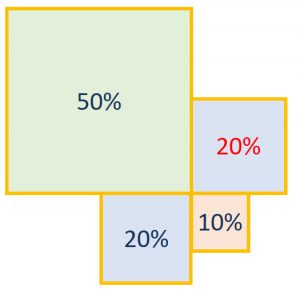 Too much innovation can be bad
Too much innovation can be bad
Innovation is dangerous. Despite the many benefits of marketing new products and services, it is important for any private organization not to underestimate the complications of practicing innovation on a day to day basis. In short, for a private organization with limited resources, too much innovation without sufficient control, can quickly lead to disaster.
Start managing your innovative projects in a unified portfolio with ITM Platform
Innovative ideas are, by definition, very risky. When you launch an innovative project, the future, the success and acceptance in the market, and often the technical difficulties for its development are unknown.
Solution: portfolio management of innovative projects
Over time, some innovative projects will fail, while others will succeed, they will come to market and may even become established.
This means that, in order to achieve successful innovation, it is imperative to fail, close defective projects, expose oneself to risk and, ultimately, lose financial resources that will not produce results.
So that the risk of innovation does not overwhelm your organization, it is essential to treat innovative projects as a portfolio that is managed according to unified criteria. Therefore the team that manages the portfolio has the important task of monitoring the organization's innovative projects.
Responsibilities include the following:
- Demand a clear business argument about the commercial feasibility of the development and its relationship with the needs of customers.
- When there are no spontaneous candidates for innovation, it is essential to request new proposals in the strategic directions and areas that have been identified.
- Establish evaluation criteria for proposals.
- Evaluate the proposals, discarding those that are too risky or do not promise sufficient benefits.
- Decide investment limits for innovative projects, as well as total risk capacity.
- Compose a balanced portfolio.
- Coordinate the management of projects that make up the portfolio, especially in the case of shared resources.
How to monitor a portfolio of innovative projects?
When composing the portfolio and with a view of monitoring innovation, it is important to:
- Have an appropriate balance between different types of projects, such as small technical innovations that improve an existing product or totally new products and services; and types and levels of risk.
- In addition, it is essential that innovative projects are not linked to each other and can fail or continue independently. Otherwise, if projects share risks and have dependencies, failure in a component could have an impact on the whole portfolio. The fundamental idea of a balanced portfolio is diversification and experimentation: that each project has its own life.
- Achieve a number of projects low enough to be feasible with available resources (which will often be shared) and high enough to allow the introduction of new products and an interesting flow of projects for the portfolio's half-yearly and annual evaluations.
Evaluation of innovative projects
As we indicated above, in order to evaluate innovative projects and decide whether to keep them in the organization’s portfolio, it is important to define a series of benchmarks. Although it will depend on the sector and the characteristics of each entity, some typical criteria are:
- Estimated cost
- Development time
- Critical resource consumption
- Alignment with the strategic factors of the organization
- Innovative and differential character
- Technical success probabilities
- Commercial success probabilities
- Ease of imitation by competitors
Once the criteria are selected, it is important that they be assigned a weighting that allows final estimates to be made. The relative weight of each factor is usually a measure of the organization's situation. For example, in consulting firms that rely on networks of collaborators, the consumption of critical resources will be of little importance, whereas the limitation of development time may have more weight than in other more stable organizations, where innovative projects can be developed with stability over the years.
The score is a good estimate of the value of the project. However, the viability of an innovative portfolio depends on special attention to the composition of its risks. Therefore, beyond that final score reached by the projects based on the selected criteria, it is recommended that the composition of the portfolio of innovative projects make use of an assessment matrix.
The assessment matrix of innovative projects
Many of our readers are already familiar with the ITM Platform risk assessment matrix. The evaluation of innovative projects allows a completely analogous technique to be used.
In the assessment matrix of innovative projects two variables appear:
- Expected commercial return of the project
- Risk level

Ideally, all projects will be placed in the upper left quadrant of the matrix, they may be scarce and there may be many projects in the balanced quadrants marked in blue (where returns are proportional to risks).
Bearing in mind that it is good practice to include projects of different types with different levels of risk and knowing that, no matter what we do, some of the innovations will not be successful, a good result is the allocation of the project budget with Percentages that follow a proportion like that of the illustration.

From the location of innovative projects in the matrix and their combination with the punctuation according to the criteria listed above, it should be much easier to make the final decision about which proposals to accept and which to discard.
Innovation will remain risky; but well-organized monitoring will increase the organization's chances of success and learning, with the potential to turn unsuccessful projects into better, more ambitious proposals in line with the pulse of the market.

 Too much innovation can be bad
Too much innovation can be bad